by Anjeanette Damon
ProPublica is a nonprofit newsroom that investigates abuses of power. Sign up for Dispatches, a newsletter that spotlights wrongdoing around the country, to receive our stories in your inbox every week.
The summer heat collected inside a fire station in Reno, the nation’s fastest-warming city, where Nevada’s governor and key local government leaders had gathered in July 2021. They were there to announce what they called a “groundbreaking” step to address climate change through a “landmark partnership” with a little-known green tech company.
“We get to be the city, the county and the state that lead the way into a new day and a new era,” Bob Lucey, then-Washoe County Commission chairperson, told the small crowd of reporters, lobbyists and government officials.
“This is how we fight climate change and protect our state,” proclaimed then-Gov. Steve Sisolak, who’d set a goal of nearly halving the state’s greenhouse gas emissions by 2030.
The governments they led had each given the company, then called Ledger8760 and now known as NZero, contracts on the promise it could provide real-time tracking of carbon emissions from scores of buildings, hundreds of vehicles and the travel of thousands of employees. Such information would allow hour-by-hour decision making to reduce their carbon footprints and move toward their climate goals, according to NZero’s pitch.
It was a bold claim for a company with no track record working with governments and without a scientist or climate expert among its founders or lead employees.
But what NZero’s executive team did have — and what gave it an edge in convincing a state, county and city to bet taxpayer dollars on the company — was a history of helping powerful people get what they want. As lobbyists, well-liked in political circles for their jovial personalities and straightforward deal-making, they had helped Uber battle an intractable taxi lobby and gain entrance to the Nevada market; Tesla win what was at the time the largest tax incentive package in state history; and the NFL’s Las Vegas Raiders secure $750 million in public financing to build a stadium. They’ve represented clients before the Reno City Council and Washoe County Commission and lobbied the Legislature on behalf of the city.
Now, Josh Griffin, NZero co-founder, decided to use those skills to grow his own business.
Beginning in late 2020, Griffin leaned on relationships with government officials to pitch them his new company, according to emails obtained by ProPublica. Over the next three years, he won contracts worth $5.7 million — funds that critics say would have been better used to make actual efficiency upgrades or invest in green power generation. In fact, Griffin convinced government officials, including the administrations of two governors from different political parties, to pay his company more and more money despite NZero’s struggles to deliver on its promise to provide real-time emissions data to make real-time decisions.
Washoe County went months without receiving data tracking electricity usage. A state of Nevada pilot project never delivered real-time data, and a larger project with the state encountered repeated delays. Only the city of Reno realized a working platform with uninterrupted and usable data.
“Their software didn’t do what they said it was going to do,” said Robin Yochum, a former programs manager at the Governor’s Office of Energy, who questioned the contract from the beginning. The statistics that NZero provided to the state during the pilot project were months old because of issues getting data in regular intervals from utilities, she said. The historic data had to be input by hand and wasn’t much better than information the state already had.
“They figured out how to get money from the government and put it into their company, and what did we get for it? Nothing,” Yochum said.
They figured out how to get money from the government and put it into their company, and what did we get for it? Nothing.
—Robin Yochum, a former programs manager at the Nevada Governor’s Office of Energy
Documents obtained by ProPublica show the local and state governments rushed to hire NZero without fully vetting the company against other competitors. A Reno spokesperson said the city tried to find similar companies but couldn’t. A Washoe County spokesperson said officials believed they were “investing in an innovative approach.” The state considered no other companies before hiring NZero for the pilot project.
Yochum, who had seen a past effort by the state to implement a similar platform fail, continued to voice her suspicions about NZero’s promises. She also didn’t think its technology would be the best way to meet the state’s ambitious climate objectives.
“The bottom line is the state needs money to be able to implement retrofits and efficiency measures to make buildings compatible with climate goals,” she said. “You should put your money into upgrading them first.”
NZero’s head of marketing, Kevin Nabipour, said in a written statement that ProPublica’s reporting “portrays a customer experience that is a stark contrast from the one we know and experience routinely with a satisfied group of engaged public sector professionals.”
In an interview with ProPublica, Griffin acknowledged NZero didn’t deliver what it initially promised. Rather than real-time data, the governments got delayed data. But it still benefited his customers, he argued.
“I know we delivered real value,” Griffin said, “even though it was incongruent with when we said we would deliver information and when they received it. It doesn’t mean at all it wasn’t valuable.”
Governments should invest in understanding their emission patterns before putting money toward improvements, he argued. Although his company provided older data, it could still be useful in judging the effectiveness of proposed efficiency projects, he said. “How do you know which one reduces the emissions the most? We’re guiding those decisions,” he said.
As of July, three years after contracting with NZero, the state of Nevada has not used the data to make efficiency upgrades, while Reno relied on the data to help implement a lighting project and Washoe County used the data to help prioritize its capital improvement projects.
Why Track Carbon Emissions?
ProPublica this year is investigating the effectiveness of government and industry efforts to combat the climate crisis and reduce their environmental impact.
Measuring emissions is a key tenet in international treaties aimed at preventing catastrophic climate change by reducing global carbon output. Such tracking is generally done at the city, state or national level through estimates of how much carbon is emitted in a geographical area over a year.
On the corporate side, publicly traded companies began looking for ways to measure their emissions to appeal to environmentally minded consumers and shareholders, and get a jump on expected federal regulations that could require it. This drove a surge in startup companies offering similar platforms.
New ways of monitoring carbon output were being developed, including sensors, smart meters and complicated models to estimate emissions. And although several internationally respected climate agencies had developed standards, there wasn’t an agreed-upon best method.
“It’s all unregulated,” said Danny Cullenward, a climate economist and senior fellow with the Kleinman Center for Energy Policy at the University of Pennsylvania. “There are various private industry standards, but they’re voluntary.”
Griffin and his lobbying partner Matt Griffin, who is not related to Josh, started NZero in 2017 with their friend Josh Weber, a lawyer specializing in electric utility regulations. They believed large-scale energy consumers — particularly the casinos and data centers they represented as lobbyists — should have better electricity consumption data, Josh Griffin said. They should know whether the electrons powering their slot machines, for example, had been generated by a solar or a coal-fired plant. (Around this time, Josh Griffin and Weber ran an ultimately unsuccessful ballot initiative to end the electric utility’s monopoly in Nevada and give consumers a choice of where to buy power. Griffin said the ballot initiative and the founding of NZero were unrelated.)
Utilities had data on exactly where consumers’ electricity was coming from but didn’t readily share it, Griffin said. Nor did consumers know how many pounds of carbon were produced generating the power they used. Griffin said they developed their platform to provide that.
For more than a decade, Nevada governments had conducted periodic greenhouse gas inventories for their jurisdictions, estimating annual emissions from all the sources within their geographic boundaries. NZero offered something different: tracking emissions generated from actual government operations — how much carbon was emitted when, for example, the city’s street lights were on or when the heater ran at city hall.
Griffin argued his platform was perfect for governments because elected leaders had promised to reduce carbon emissions. The Sisolak administration, for example, set a goal of cutting greenhouse gas emissions by 45% by 2030 and 100% by 2050. Officials could “lead by example,” proving to private industry that accountability was possible through accurate data, Griffin said.
To calculate these emissions, however, NZero needed access to data on energy consumption from each government building, including natural gas, electricity and water. But the availability of the data was hit or miss for each address depending on the service provider, what kind of meters were in place and whether the utility was willing to share it.
“There’s nothing you can do if they don’t want to give you the data,” said Connor Taylor, a senior analyst with Verdantix, which sells buyer’s guides on carbon tracking software. “It’s not like anyone’s legally obligated to do it. So it really hinges on the strength of that relationship.”
There’s nothing you can do if they don’t want to give you the data.”
—Connor Taylor, a senior analyst with Verdantix
It turned out real-time data wasn’t available from Southwest Gas, southern Nevada’s largest natural gas provider, and NV Energy, the state’s primary electricity provider, didn’t want to share customer data with NZero.
What Went Wrong
Reno avoided significant problems with NZero’s platform because the city collected the data from NV Energy itself and passed it to NZero for analysis. The city said it didn’t have examples of efficiency projects undertaken because of the data but has used the information to measure how effective some of its projects have been. A spokesperson said it has been “critical for our sustainability goals.”
Early on, NZero was able to tap into Washoe County’s electricity and natural gas usage data from NV Energy, which gave the county a working platform. But it showed information that was a month old, not real-time. Brian Beffort, Washoe County’s sustainability manager, said although NZero didn’t deliver data in real time as promised, the platform has proven essential for tracking progress toward the county’s emissions goals. “Without it I would be shadow boxing,” he said.
When NV Energy cut off the feed, the county lost access to even its month-old data for nearly a year. But NZero continued to collect its $6,000 monthly fee for providing it. Beffort said he didn’t immediately notice the outage and didn’t think it would be fair to penalize NZero for the utility’s actions. The county is working on a fix, but as of July, that process wasn’t yet finalized.
“To be clear, that’s on NV Energy, not NZero,” Beffort said.
The state had a similar problem. Unlike the city or the county, Nevada signed a contract for what was supposed to be a small pilot program. NZero would track real-time emissions from just five state buildings, rather than government-wide operations.
It was Yochum’s job to run the pilot project. Six months into the yearlong contract, NZero was still trying to wrangle data from Southwest Gas. And soon after it settled on a method for inputting historic data for both electricity and gas, NV Energy decided that sending data to third parties violated customer privacy and cut it off entirely.
The real-time data to make on-the-spot decisions about energy usage never materialized, Yochum said.
An NV Energy spokesperson said that in order to protect its “customers’ sensitive data,” the utility “no longer provides data directly to third-party vendors on behalf of customers.”
Influence vs. Research
Governments should carefully vet whether a company offering carbon tracking technology can access data from utilities before signing a contract, Taylor said.
With NZero, the governments tailored their solicitation letters directly to what NZero said it was offering. Yochum said she was told to do so and to structure the contract to avoid a lengthy and competitive process. At the time, contracts valued at less than $25,000 could be approved without a public vote by elected officials.
Although Yochum wouldn’t comment on who told her to do these things, her emails from the time shed light on where the pressure was coming from: “This is a priority for the Governor’s Office,” Yochum wrote in a June 2021 email urging the state’s budget office to expedite the contract.
In a June 2021 email, Robin Yochum, a former programs manager at the Nevada Governor’s Office of Energy, informed the state’s budget office that the NZero contract was a priority for the governor’s office.
(Obtained and redacted by ProPublica)
In Yochum’s mind, the pilot project had failed and she expected to move on from NZero, which she described as a good company but not right for the state’s needs. But one month after Yochum wrote a memo detailing where the company’s pilot project had fallen short, NZero submitted a glossy 15-page proposal for nearly $13 million in American Rescue Plan funding for an “expanded partnership” with the state.
Emails obtained by ProPublica show Josh Griffin stepped up his lobbying of the administration, working the governor’s new energy adviser and chief of staff, Yvanna Cancela, who explored how to get NZero a $5 million contract without a competitive process. One way would be for NZero to offer its services through an existing state contractor. NZero then signed a partnership agreement with Deloitte Consulting.
When Yochum learned of the effort to avoid a competitive process, she objected.
“I was told, ‘We have to do this. The governor’s office wants to do it, we are going to do it,’” Yochum said.
I was told, ‘We have to do this. The governor’s office wants to do it, we are going to do it.’
—Robin Yochum, a former programs manager at the Nevada Governor’s Office of Energy
Yochum wasn’t the only skeptical state employee. A purchasing official pointed to significant delays in the pilot project and warned that Cancela’s close communication with NZero could “create an appearance of impropriety in a future solicitation,” wrote Gideon Davis, one purchasing officer.
Another argued it might not be the best use of $5 million if the goal were to reduce carbon emissions. The director of the Nevada Department of Administration, Laura Freed, sent a lengthy email with a half-dozen alternative sustainability projects, including prioritizing the purchase of electric vehicles, upgrading state-owned building metering for gas and electricity, and requiring zero-energy use building plans for new buildings. The proposal appeared to go nowhere.
The state has known for years where it needs to make energy improvements. In 2009, the public works department created a list of nearly 2,000 energy efficiency projects, some as simple as changing out fluorescent light bulbs. Fifteen years later, the state is still working to fund those projects. In 2021, public works was awarded $9.4 million for a handful of projects, including changing light bulbs listed as a priority in 2009. Last year, no money went toward the listed projects.
“If I had $5 million to spend to pursue things that would meaningfully advance the state of Nevada’s climate leadership, there are other things I would spend it on, such as energy efficiency upgrades to state buildings,” said one former state employee involved in the project, who asked not to be named because they feared it could hurt their current employment. “That’s the bread and butter. We know the problem buildings. We know the aging infrastructure. We got the backlog of deferred maintenance. You can do some good with $5 million just improving infrastructure.”
The governor’s office ignored the concerns about NZero. Yochum’s frustration over it, in part, led her to resign from the state in March 2023.
Cancela acquiesced when the purchasing department said a competitive process would be required. She told ProPublica she was in charge of pursuing the governor’s priorities and, after consulting with state energy and finance experts, she had determined NZero’s concept “had merit,” but “the appropriate path forward was a competitive bidding process.” The emails also show she was unfamiliar with government purchasing rules and sought guidance.
The request for proposals went out in October 2022. Three companies answered. And in December, NZero, the company that had convinced the state such a project was needed in the first place, was declared the bid winner.
Josh Griffin said he didn’t do anything inappropriate by looking for a way to avoid competition. When he was told the contract had to go out to bid, he stopped lobbying, he said.
“We weren’t trying to lobby our way through it,” he said.
Matt Griffin, who worked as the company’s legal counsel for three years and was listed on early incorporation documents along with other members of the Griffins’ lobbying firm, said he didn’t want to comment. Josh Weber, who is now the company’s CEO, said he wasn’t involved with the company during the negotiations or implementation of the state contract.
Deals Under a New Governor
As the final details of the $5 million contract were being negotiated, Sisolak lost his bid for reelection. When Gov. Joe Lombardo took office in 2023, he abandoned Sisolak’s climate strategy, which NZero had used to justify its proposal. Lombardo’s energy plan focused more on electricity generation (prioritizing natural gas) and transmission than climate action. That signaled a move away from emission tracking.
But the change from a Democratic to a Republican administration didn’t change NZero’s fortunes. As the contract was being negotiated, NZero was lobbying the new administration, in apparent violation of state laws governing the competitive bid process.
“It has come to my attention that employees or representatives of the intended vendor, NZero, have communicated directly with you or others at the state regarding the final stages of this contract,” Davis, the state purchasing officer handling the contract, wrote to Lombardo’s new energy director, Dwayne McClinton. A spokesperson for the governor’s office said Davis wrote to McClinton, who had been on the job only three weeks, to “ensure compliance.” Josh Griffin said he didn’t know to which communication Davis was referring but didn’t believe the bidding restrictions on communication applied during the time the contract was being negotiated.
Jeanne Stoneman, Lombardo’s deputy director of energy, said the administration moved forward with the contract because it saw the potential to help reduce the state’s energy consumption — and energy bills — as well as its carbon footprint. (Stoneman left her position with the state in June.)
Griffin said by the time the contract was signed, NZero had a work-around for getting data from NV Energy. The fix, he said, was for the state to give NZero login information to all of its electricity accounts, which the company promised to keep confidential. (In one email obtained by ProPublica, an NZero staffer advised the Nevada National Guard to turn off two-factor authentication so the company could get into the account.)
Still, the project was plagued by delays and skeptical state employees.
“I did not recall the program providing us with any more detailed information above what we already generate ourselves,” the energy manager for state public works wrote to his supervisor when the energy office tried to schedule a “project kickoff meeting” with Team NZero, as the new partnership with Deloitte was called. Another brought up “serious security concerns” about sharing account login credentials with a third party.
Last November, when the project was supposed to be wrapping up, it had barely begun.
Although the Team NZero project was suffering from severe delays at the end of last year, documents show the team began to resolve the problems in January. In some cases, the resolution was simply to not include entire departments that had been difficult to communicate with. McClinton said in a June interview that energy use in 95% of state buildings is now being tracked in real time.
NZero delivered its capital planning report to the state in April, about a month late and without the data from the departments that didn’t participate. Because of the delays, Team NZero did not close out the project until July, three months after the contract ended. McClinton said that “no decisions or improvements have been made based off the data yet.”
Lombardo’s spokesperson blamed the project delays on difficulty finding a secure way for NZero to access the state’s utility accounts.
“Ultimately, the state was able to provide nZero with limited access to accounts without control features, which ensured minimal external access,” she said.
Deloitte did not respond to a request for comment.
Despite Team NZero’s project delays, Josh Griffin didn’t stop pushing for even more money. During the legislative session in early 2023, Griffin lobbied the Lombardo administration for another $11 million to be included in the governor’s proposed budget. When the administration denied the request, the company turned to the Legislature. In the final hours of the session, lawmakers passed an emergency bill introduced by Senate Majority Leader Nicole Cannizzaro that allocated $11 million to, among other things, track electrical energy consumption in “near real-time.”
“The Governor’s office indicated at the time that they were fully supportive of allocating funding to allow them to keep the program going, and we were happy to find an area of bipartisan cooperation on promoting more climate-friendly government practices,” Cannizzaro’s spokesperson said in a written statement.
To assuage the concerns of skeptical lawmakers, Cannizzaro had assured them that money from the bill would be subject to a competitive bid process. McClinton echoed that in an interview with ProPublica.
But in March, McClinton’s office made another move that would have skirted the competitive process. At the direction of the governor’s office, it attempted to funnel an additional $8.87 million to NZero by amending the contract without putting it out to bid, according to emails obtained by ProPublica. Again, an administration employee flagged the “enormous amount” as inappropriate for a contract amendment, and purchasing officers halted it.
A spokesperson for McClinton said despite the go-ahead on the amendment from his department’s lawyers, he continued to look for other possible vendors and discovered another company was already tracking vehicle emissions for the state. That company was provided more funding to expand its services, and the effort to amend NZero’s contract was dropped. McClinton said his office may still open a bidding process for remaining funds from Cannizzaro’s bill and NZero would be welcome to compete.
Meanwhile, the NZero board has replaced the company’s CEO with Weber, one of the co-founders, and both Josh Griffin and Matt Griffin resigned earlier this year. The company has lost about a third of its employees, according to a LinkedIn estimate. The restructure was unrelated to the Nevada contract, Weber said. He added he’s excited about the company’s future as it refocuses on new tools to help its customers “optimize their efforts to reduce impact on the planet.”
This post was originally published on ProPublica.
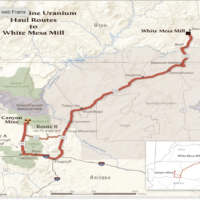
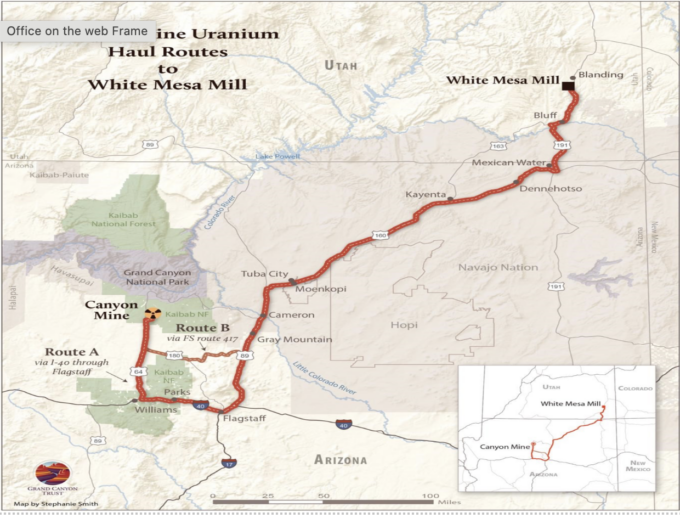



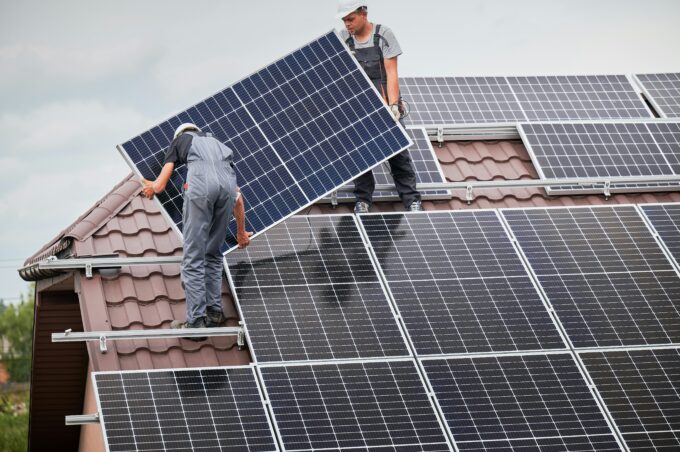



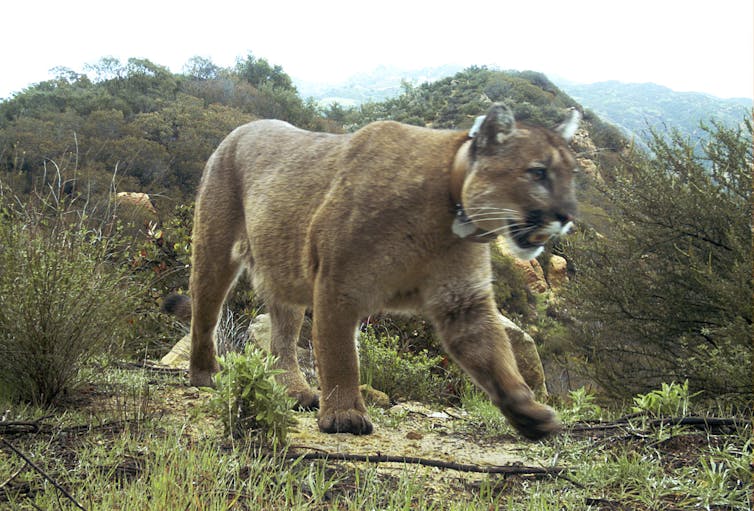











 (@JustinBaileyart)
(@JustinBaileyart) 
 (@XRebellionUK)
(@XRebellionUK) 
 Reform democratic system of UK (@Paul_Briley)
Reform democratic system of UK (@Paul_Briley) 


 Pexels
Pexels Unsplash
Unsplash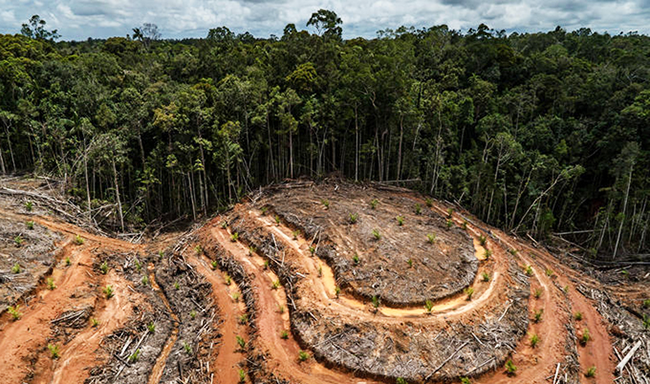 Greenpeace
Greenpeace Beyond Meat
Beyond Meat
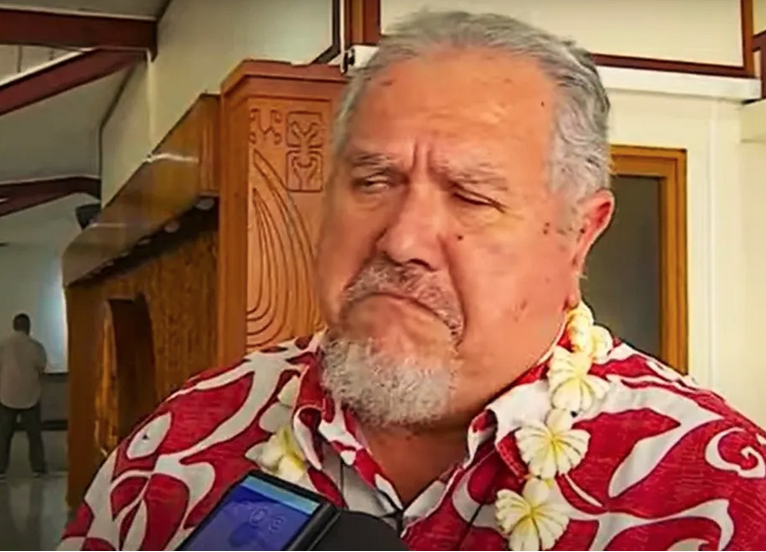
![New head of UN deep-sea mining regulator vows to restore neutrality International Seabed Authority secretary-general elect, Leticia Carvalho [center] of Brazil, is congratulated by an ISA delegate following her election on Aug. 2, 2024 in Kingston, Jamaica.](https://media.rnztools.nz/rnz/image/upload/s--UC_13_MA--/ar_16:10,c_fill,f_auto,g_auto,q_auto,w_1050/v1722651600/4KM0UUP_41ac6ac7_885b_420f_8c4d_47af5f70ec06_jpeg?_a=BACCd2AD)
![International Seabed Authority secretary-general elect, Leticia Carvalho [left] of Brazil, is pictured with The Metals Company CEO Gerard Barron following her election on Aug. 2, 2024 in Kingston, Jamaica.](https://media.rnztools.nz/rnz/image/upload/s--sNXqzt-F--/ar_16:10,c_fill,f_auto,g_auto,q_auto,w_1050/v1722653901/4KM0T2S_9fac3ef7_61e3_4d6e_b025_c580a1dcb959_jpeg?_a=BACCd2AD)








 Unsplash
Unsplash Unsplash
Unsplash Unsplash
Unsplash Pexels
Pexels Unsplash
Unsplash